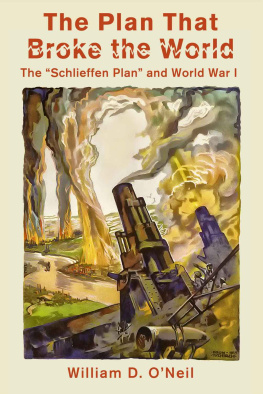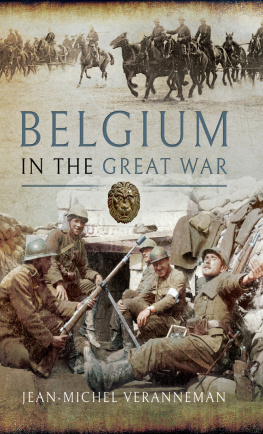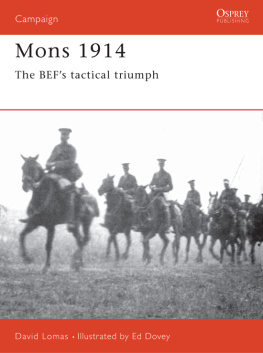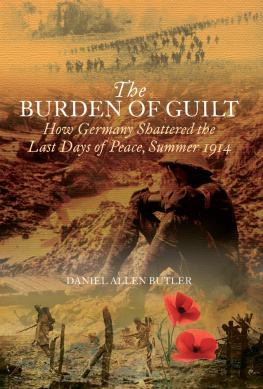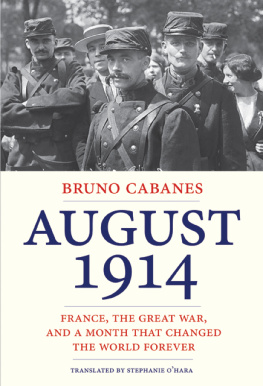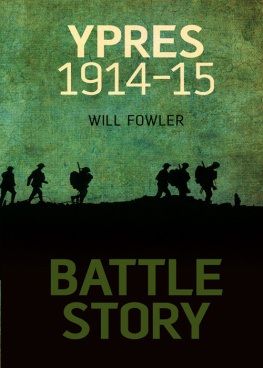I COULDNT EVEN BEGIN to list allof the people who have provided research help or important insights and ideasthat have shaped this book. There were many crucial things I needed to learn inorder to write it and Im very grateful for all the help Ive had in learningthem.
I do want to mention some members of alargely uncelebrated but absolutely essential group of peopleresearchlibrarians and archivists. Rea Stone and more recently Linette Neal of thelibrary at the Center for Naval Analyses (where I hold an appointment as aSenior Fellow) have been consistently responsive and helpful. And theHistorical Office of the U.S. Army Communications-Electronics Command went toconsiderable trouble to provide essential material on early communications.Several others who prefer to remain anonymous also have been very helpful.
Sara-Ann Determan helped substantiallywith proofreading, an effort to which Scott Peterson also contributed.
Finally, I want to acknowledge theperson whose consistent support, direct and indirect, has been most vital inthis and all my workmy wife, Anne Murphy ONeil.
I. Introduction
FEW PEOPLE TODAY CAN SEE much good in war, but World War I(19141918) has a particularly dreadful reputation. Its not only that the warwas responsible for the deaths of 16 million people, mostly young and many byuniquely horrifying means, but its effects marked practically everyone whosurvived (at least in Europe and North America), and continue to torment useven after a century. There was nothing romantic or glorious in this war; itdid vast harm and scarcely any good. Even the scanty benefits sometimes claimedfor it are largely illusory.
The causesthatunderlie World War I seem grotesquely mysterious. Did Serbian leadersreally launch one of the most ghastly wars in history by sendingteenagedterrorists to shoot a widely-controversial Austrian prince and his wifeon a dusty street in an obscure Balkan town? What can they have been thinking?What can leaders of other nations have been thinking when they piled on?
Those with much interest in military history will usually tell you that it wasthe brilliant and audacious plan with which Germany began World War I in August1914, intended to defeat the French Army in six weeks.
Thats really quite wrong. Schlieffen played an important part in laying thegroundwork for German war planning, but not the part thats usually described.And the plan that Germany was actually pursuing was only slightly like the onefound in most books.
Its very frequentlyclaimed that even though it led the German Empire to wreck and Europe tocatastrophe, the plan was a work of genius that went awry only because it wasbotched by the men who executed it.This book shows thats nonsense. Even with the best possible execution the planwould have been far too risky for a bet-your-country wager. It wasnt the bestof all possible plans, very far from it. The German Empire had realisticoptions for pursuing its objectives and needs with much lower risk, optionsthat wouldnt have required knowledge, technology, or resources beyond what wasavailable in the 1910s.
History is about whathappened rather than what we imagine might have happened. But this book isntreally a history, or at least not primarily history. It explores the question ofwhy very smart, well-prepared leaders made catastrophic miscalculations. Tounderstand that we need to know what the alternatives were, not just thealternatives that they thought about and rejected but the ones they implicitlyrejected without any thought, at least conscious thought.
Not many decisions go wrong on quite the samescale as those made by the leaders of Germany in late July of 1914, but majormiscalculations arent rare in human affairs. Studying German illusions at thestart of World War I helps to illuminate not only the history of the war butwhat might be done to avert catastrophic miscalculations in the future.
THE ULTIMATE PURPOSE of this bookis to contribute to the exploration and understanding of the processes oflarge-scale decision-making, not to history itself. Im not a professionalhistorian and have done none of the original archival research that is thedefining activity of professional historiography. But an accurate understandingof history is essential in order to understand how decision-making trulyworked.
And that presents a problem. Even peoplewho have devoted a fair amount of study to the First World War often havelittle knowledge of how and why the relevant decisions were made, nor of thecircumstances that shaped and constrained them. And its not as easy to findcorrect and relevant information as I had supposed when I started work on thisbook.
For the past four or five decades thesubstantial majority of the professional historians whove written about thewar have focused most of their research on its ordinary people, those whobore most of its burdens, endured most of its hardships and privations, and didmost of its bleeding and dying. It was of course the efforts of this mass ofpeople, taken in sum, that ultimately determined the conflict outcomes and thefates of nations and peoples.
Nevertheless, the course of their effortswas guided and focused by the decisions (or indecisions) of a far smaller groupof political and military leaders. Theirs is not the whole story and we cannotsay even that it is the most important story in any absolute sense. But itsthe important story for the purposes of this book, and thats the part of thehistory of the war that it deals with. Specifically, it deals with thedecisions of Germanys military leadership about how to pursue their nationswar aims and how they related to the national decisions for war and the ways inwhich the decisions played out.
EVEN THOUGH THIS is not ahistorybook as such, it has a lot in it that will surprise many people whohave readabout the war. I know that because Ive tried it on sample audiencesandlistened to their reactions. For most people, including manyhistorians, WorldWar I is a story of trench warfare and the spade is absent here.Many peopleare surprised to learn that Mons, Charleroi, the siege of Namur and theforcing of the Meuse above Namur are all names for variousparts of one great battle, abattle usually recorded as a victory for the German Army, but at whichit lostwhat was surely its best opportunity to conclude the war on favorableterms.

